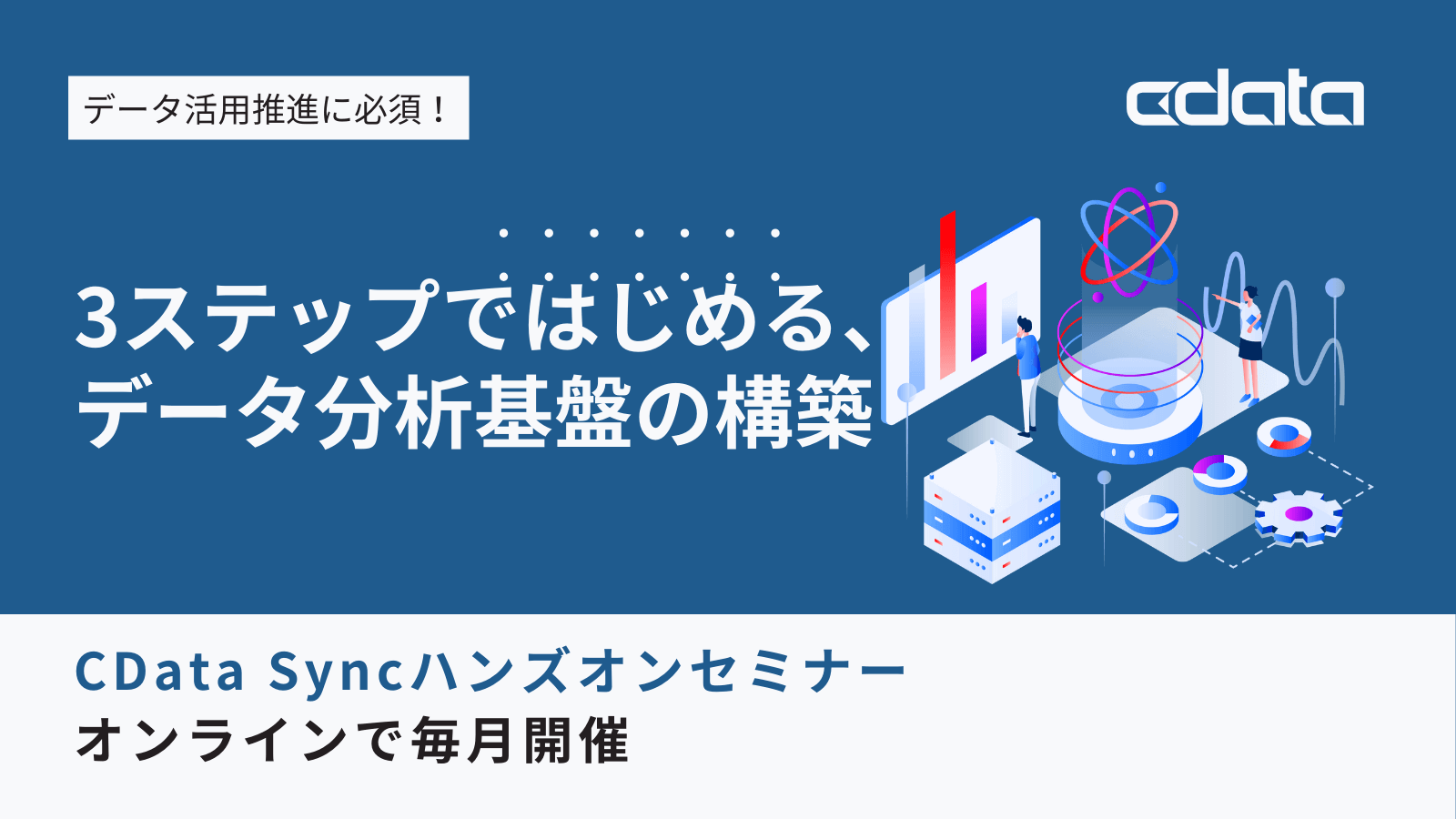ノーコードでクラウド上のデータとの連携を実現。
詳細はこちら →CData Software Japan - ナレッジベース
Latest Articles
- MySQL のデータをノーコードでREST API として公開する方法:CData API Server
- CData Sync AMI をAmazon Web Services(AWS)で起動
- Connect Cloud Guide: Derived Views, Saved Queries, and Custom Reports
- Connect Cloud Guide: SSO (Single Sign-On) and User-Defined Credentials
- Connect Cloud クイックスタート
- Shopify APIのバージョンアップに伴う弊社製品の対応について
Latest KB Entries
- DBAmp: Serial Number Expiration Date Shows 1999 or Expired
- CData Drivers のライセンスについて
- Spring4Shell に関する概要
- Update Required: HubSpot Connectivity
- CData Sync で差分更新を設定
- Apache Log4j2 Overview
ODBC Drivers
- [ article ] Delphi のMySQL データへのデータバインドコントロール
- [ article ] Linux/UNIX 上のPython からFTP データにデータ連携
- [ article ] PowerShell を使ってWordPress データをSQL Server にレプリケーション
- [ article ] Microsoft Power BI Designer でCData Software ODBC ...
JDBC Drivers
- [ article ] DBArtisan でJDBC 経由でPCA Sales をデータ連携利用
- [ article ] QuickBooks データをDatabricks にロードして分析処理を行う方法:CData ...
- [ article ] xBase データをSisense でビジュアライズ
- [ article ] Squirrel SQL Client からBusiness b-ridge データに連携
SSIS Components
- [ article ] SSIS を使ってOData データをSQL Server にインポート
- [ article ] Dynamics 365 Business Central データからSQL Server ...
- [ article ] SSIS を使ってPresto データをSQL Server にインポート
- [ article ] Sage 200 をSSIS 経由でSQL サーバーにバックアップする
ADO.NET Providers
- [ article ] PowerShell からCockroachDB ...
- [ article ] PowerShell からGaroon データに接続してデータの更新・挿入・削除を実行する方法
- [ article ] SSAS でSAP HANA XS Advanced データに連携するOLAP Cube を作成
- [ article ] Adobe Analytics データを複数のデータベースにレプリケーション。
Excel Add-Ins
- [ article ] PolyBase で外部データソースとしてExcel を連携利用
- [ article ] StiLL からCData Software ODBC Driver を使ってSalesforce ...
- [ article ] Elasticsearch へLogstash 経由でSharePoint Excel ...
- [ article ] Microsoft Power BI Designer でCData Software ODBC ...
API Server
- [ article ] Power View でのOData データのインポートとビジュアライズ
- [ article ] 全文検索・情報活用システムのQuickSolution にOData ...
- [ article ] Tomcat Connection Pool にCData Software JDBC Driver ...
- [ article ] 生産スケジューラFLEXSCHE へOData からデータを取り込む
Data Sync
- [ article ] Apache Cassandra へのZoho Creator データのETL/ELT ...
- [ article ] Google BigQuery へのImpala データのETL/ELT ...
- [ article ] Microsoft Access へのXero WorkflowMax データのETL/ELT ...
- [ article ] Vertica へのGoogle Search データのETL/ELT ...
Windows PowerShell
- [ article ] PowerShell を使ってSharePoint Excel Services データをSQL ...
- [ article ] PowerShell を使ってFacebook Ads データをSQL Server ...
- [ article ] PowerShell からTSheets データに接続してデータの更新・挿入・削除を実行する方法
- [ article ] FreshBooks データをPowerShell script でSQL Server ...
FireDAC Components
- [ article ] Delphi のIBM Informix データへのデータバインドコントロール
- [ article ] Delphi のKingdee K3 WISE データへのデータバインドコントロール
- [ article ] Delphi のOracle データへのデータバインドコントロール
- [ article ] Delphi のRaisers Edge NXT データへのデータバインドコントロール





